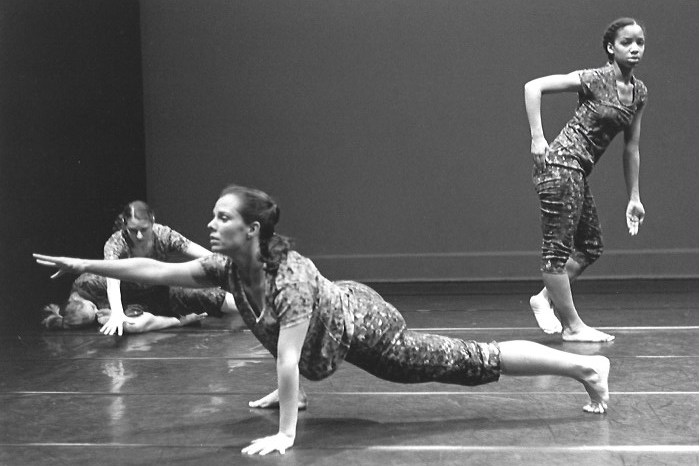As I mentioned in the previous blog, Canon Lloyd Casson played a very important role in the development of The Forgiveness Project. Even before planting the seeds for this project, he was an inspiring resource for Avodah and for me personally, and I thank him. In December 1997 Kezia Gleckman Hayman wrote this beautiful article about him and his approach. His message and Kezia’s writing seem even more important today. Thank you, Kezia, for sharing this again.
The entire article below is from the December 1997 Avodah Newsletter.
(Kezia notes that it was in the service described below that she first heard the spiritual “There is a Balm in Gilead,” beautifully sung by the choir. She found it particularly fitting, therefore, that in the opening of the Forgiveness Project piece, it was that same spiritual that Newman Taylor Baker chose to sing, so movingly.)
________________________________________
When Avodah Makes You Cry or Burst into Applause, Say Hello to Your Soul
Since its founding, Avodah has been honored to perform in both Jewish communities and arts settings throughout the country, and in 1997 we continued our joyful tradition of appearing in temples, community centers, schools, museums and theaters. In November, we enjoyed an extra-special interfaith experience, which we share here with you.
In ancient Hebrew, “Avodah” meant “worship”; in modern Hebrew, it means “work.” (I seem to remember hearing the violinist Yehudi Menuhin define “Avodah” as work for which one feels a calling – an avocation – or “service of the heart.”) Similarly, “liturgy,” which we currently understand to mean “worship” or “ritual,” is derived from the Greek word meaning “public service.” Such were the connections shared recently in a forum entitled Dancing Together as People of Faith, following Avodah’s participation in the Sunday morning service at the Episcopal Church of Saints Andrew and Matthew in Wilmington, Delaware. In a service given the theme One Earth, One God: A Holy Dance (and filled with the mighty dance of music of the choir and organist), Avodah danced three pieces: the Hanshamah Lakh (The Soul is Yours) section of our Selichot Suite; May the Words (“May the words of my mouth and the meditations of my heart be acceptable unto Thee, oh Lord, my strength and my redeemer”); and Kaddish. Our journey to Wilmington began with our participation last year in an AIDS memorial service at St. Mark’s Church in New York City, where the spiritual leader was Canon Lloyd Casson and the musical director was Jeannine Otis. Canon Casson is now in Wilmington. Jeannine has been visiting there as guest vocal soloist, and she accompanied our dancing. Avodah seeks in several of its pieces to explore the history of liturgy and to capture the essential feeling of such ritual. We believe that the history of much ritual overlaps religions, and certainly the goal of such experience is recognizably common. When we met Canon Casson at St. Mark’s, we knew we had stumbled upon a remarkable spiritual leader. The AIDS memorial service was accessible, meaningful, moving, respectful and soothing for attendees of all faiths, without attempting to hide its Episcopalian setting. In Canon Casson’s leadership it was simply clear that the message delivered did not depend upon details of the particular terms chosen for its communication.
Canon Casson is an unassuming, gentle man with a heart-filled smile. In normal conversation, he speaks in a muted voice and draws into himself both vertically and horizontally as if trying to disappear. When leading a service he maintains the unpretentiousness of his delivery but takes on a conviction and posture which convey powerful grace. He is vocal about his aim to help establish an “alternate” liturgy, and he and Jeannine have become an inspirational leadership team on this path. The journey is for ritual which reflects the searching and learning of current worshipers. Tradition is respected but it is not adopted merely for its own sake; worshipers explore the roots of their traditions and re-adopt rituals with renewed strength. The Church of Saints Andrew and Matthew represents a combining of two parishes, one predominantly white, the other mainly African American. The coming together of these parishes, similar yet different in their traditions, is consistent with Casson’s larger commitment to a broad spiritual community. He himself is a member of a group based in India serving the poor and sick.
While rituals may always vary from religion to religion and within related denominations, while Jews and Christians do not agree on the Trinity, the critical question for each of us must be to what extent we allow these differences to shape our highest sense of spirituality and acts of humanity. In his sermon, Casson lamented that throughout history persecuted groups have overwhelmingly failed to grasp the lesson of refraining from persecuting others. In the lively and engaging forum following the service, it became clear that intra-denominational differences as to observance can become as hurtful as those between faiths. The Jewish community has been suffering critically from such divisiveness. It was most encouraging to hear the voices in Wilmington affirming the need to focus on the spiritual and to strive to respect all expressions of faith. Avodah joins in the belief that re-examining the source and intent of liturgy, and celebrating its ability to touch our souls, is one road toward a community that challenges itself to act with honor and compassion. Avodah looks forward to continued involvement in the interfaith community wherever common ground – “holy ground” – is being sought and nurtured.
KGH
[print_link]










